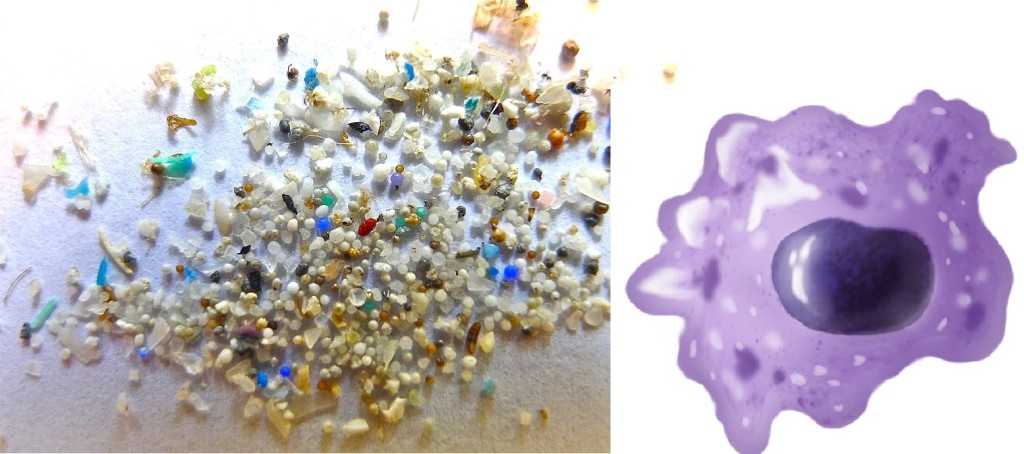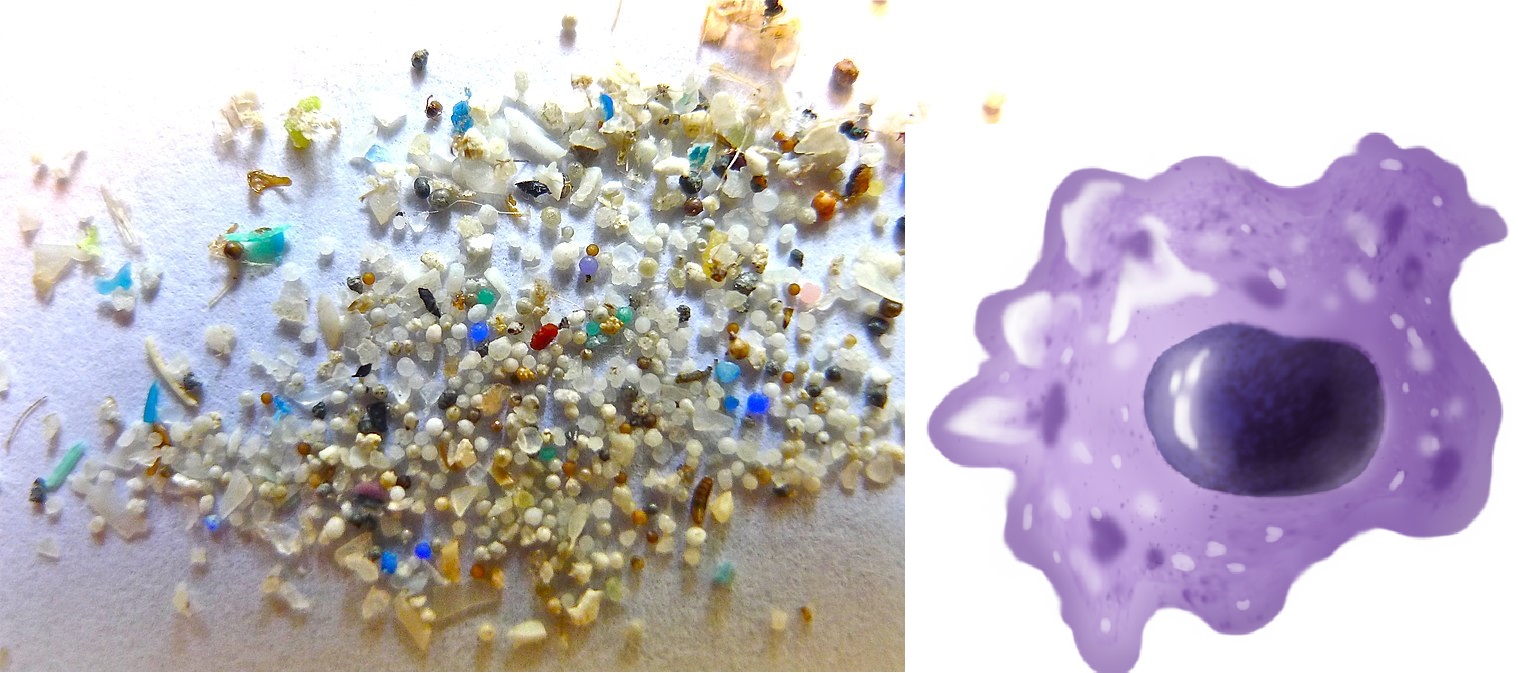
Japanese scientists have made a breakthrough discovery on the effects of ingesting microplastics, namely that our immune system is capable of protecting us from them.
Microplastics have been recorded everywhere we’ve looked for them: in the jetstream, at the deepest depths of the ocean, and at the summits of remote mountains.
Trying to figure out the potentially toxic effects of microplastic exposure in our bodies, the scientists discovered that one of the same cellular signals that guide macrophages to remove dead cells from the body, also guides them to remove microplastics.
Before explaining the finding further, it’s worth understanding the process of apoptosis and efferocytosis.
Apoptosis is the process by which dead cells are cleared in the body. When a cell is dead or dying, it signals to the body it must be removed—the job for a macrophage or dendric cell. Macrophages are the heaviest weapon in the immune system’s arsenal because they can completely swallow pathogens targeted for removal.
A macrophage receptor called Tim4 is designed to identify apoptotic cells and devour them—a process called efferocytosis, or “phagocytosis” if done by macrophages. Once devoured, the dead cell is encased in a liquid pocket to prevent its contents from seeping out into the cell or the macrophage.
Impaired efferocytosis has been identified in a dozen or more common autoimmune disorders like lupus, cystic fibrosis, and asthma.
“We were keen to see if Tim4 bound to polystyrene which is composed of aromatic styrene units, and if this interaction perturbed an immune response,” said Professor Masafumi Nakayama of Ritsumeikan University, Japan.
What they found was critical to understanding how best to control one’s exposure to pollutants, especially if they live in a city or suburban area.
When microplastics enter the body, they are engulfed preferentially by macrophages, and Professor Nakayama found that the act of doing so doesn’t cause acute inflammation by monitoring a suite of the most common inflammatory compounds like nitric oxide, IL-1, TNF-alpha, and reactive oxygen species, which are all typically released in small amounts during efferocytosis.
MORE HEALTH NEWS: Magnesium May Prime the Immune System to Fight Cancer and Infections
Furthermore, this was not shown to be harmful to the macrophages themselves; they were able to engulf the polystyrene and carry on with their important work.
What the scientists did discover however was a novel aromatic interaction between the Tim4 receptors with polystyrene particulars and another nanomaterial they were testing. The nanomaterials impaired the efferocytosis of the dead cells in the area.
MORE TOXIN NEWS: This Pollution-Gobbling City Bench Can Absorb as Many Toxins as 275 Trees
In other words, the microplastics distracted the macrophages from clearing out dead cells that would normally be targeted for destruction.
The scientists concluded that low levels of microplastic ingestion in the body do not cause inflammation and that microplastics can be removed by macrophages. Contrastingly, too much microplastic pollution would impair the removal of dead cells.
If an individual is worried they may be exposed to too much microplastic pollution, other therapeutic measures could be used to try and offset this impairment such as the consumption of a senolytic compound like grape seed extract, exercise, or heat stress therapy in a sauna.
Another method for reducing microplastic infection would be to get microplastic-rated water filters on your taps and your shower head.
SHARE This Important Health And Safety Discovery With Your Friends…




















